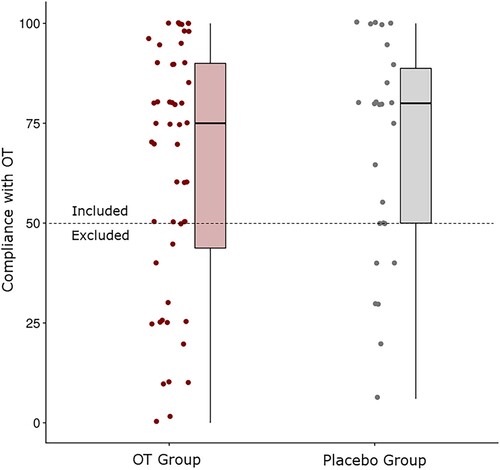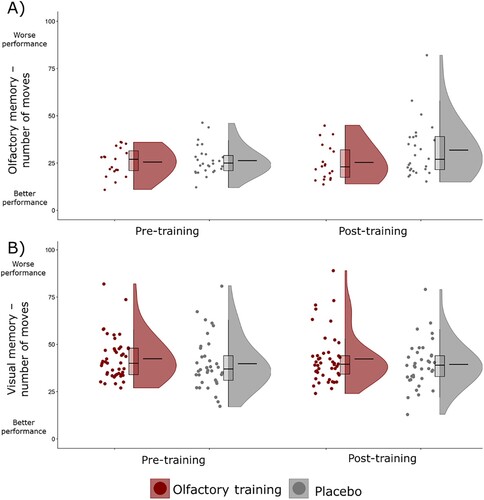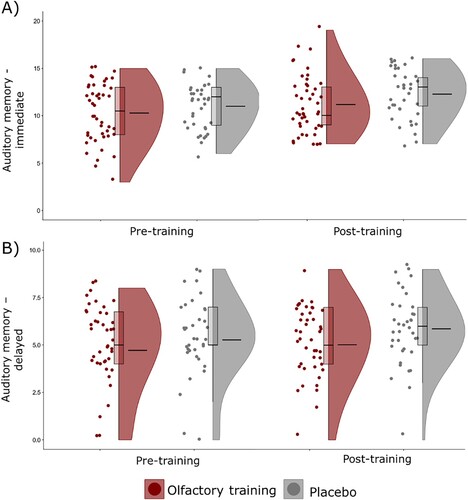Figures & data
Figure 1. Distribution of the parent-reported compliance with OT across each group. The dashed line depicts the inclusion cut-off of 50%. OT = olfactory training.

Figure 2. Flowchart presenting the number of participants who completed each part of the study. OT = olfactory training, WM = working memory.

Table 1. Odours used in the olfactory working memory task.
Table 2. Three sets of Polish words used in the auditory working memory task (English word in brackets).
Table 3. Estimated marginal means of the working memory scores across the sensory domains presented by group, while controlling for age.
Figure 3. Scores on the olfactory (panel A) and visual (panel B) working memory tests during pre- and post-training by olfactory training and placebo groups. The scores indicate the number of moves required to finish the task where lower scores indicate better performance. Mean scores are represented by the horizontal line in the violin plots.

Figure 4. Scores in auditory working memory task for immediate (panel A) and delayed (panel B) recall of a list of words during pre- and post-training assessment in the olfactory training and placebo groups. Mean scores are represented by the longer line in the middle of violin plots.

Data availability statement
The data that support the findings of this study are available from the corresponding author upon reasonable request.
